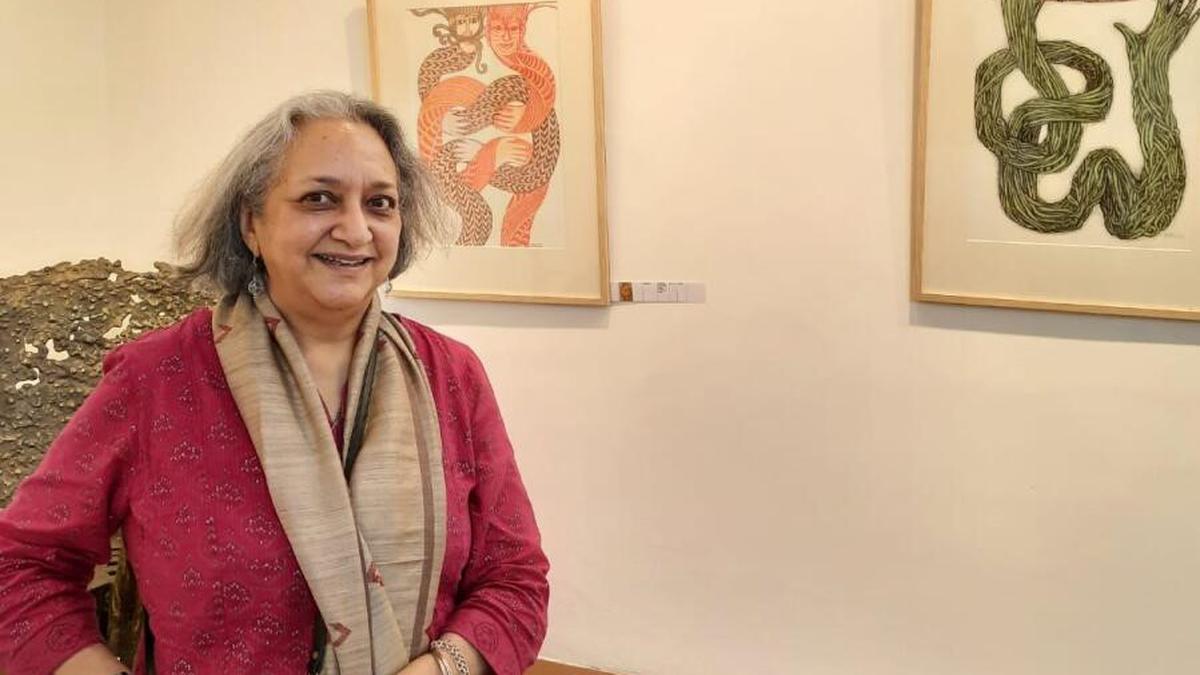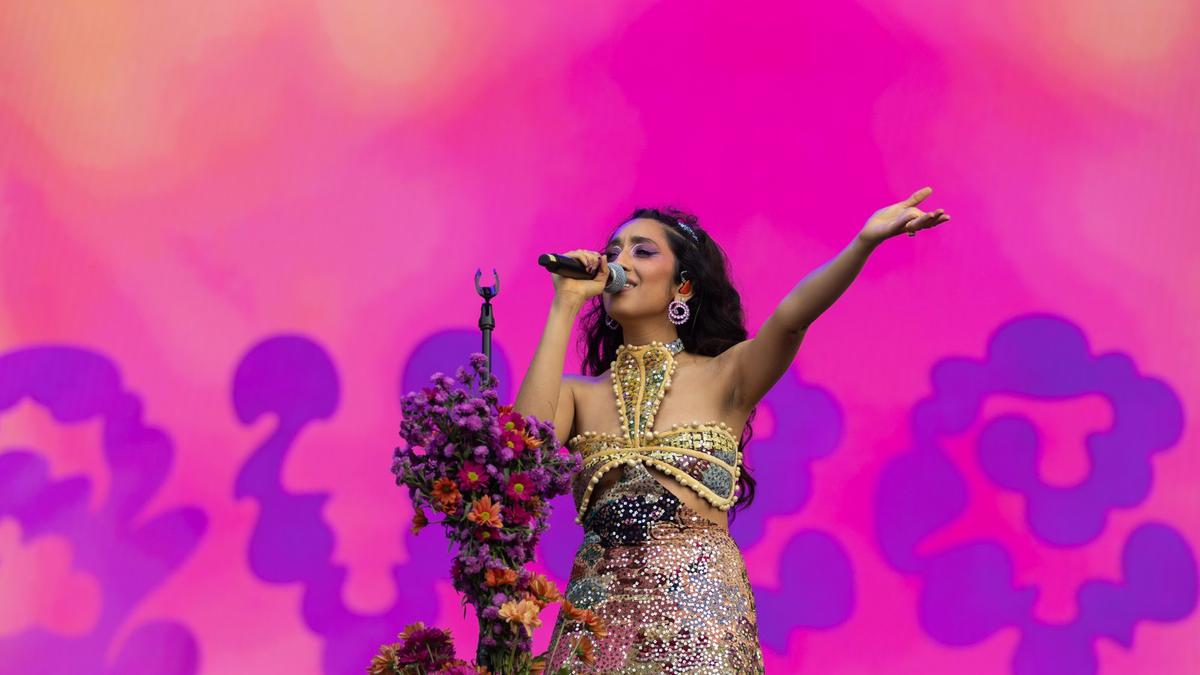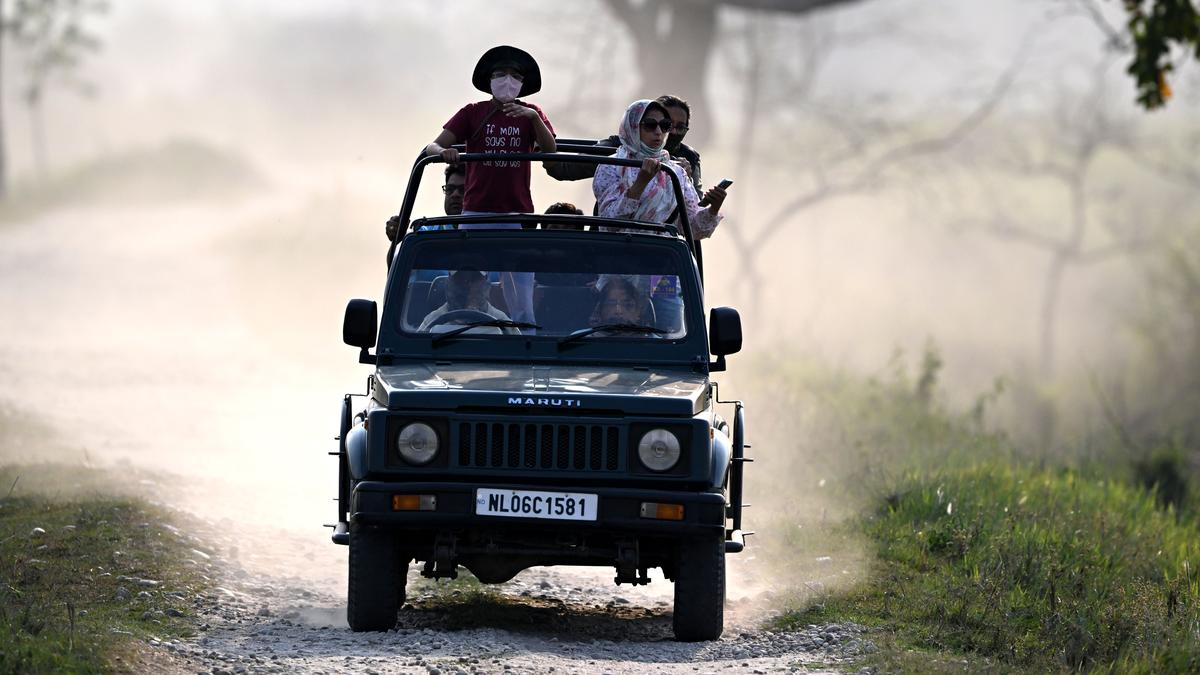Rama Vaidyanathan performing at the Music Academy
| Photo Credit: S.R. RAGHUNATHAN
Nritya Kalanidhi Rama Vaidyanathan’s recital while being replete with individualistic touches, for which the dancer is known, seemed low key. She began with ‘Madhumateer’, an invocation to Earth, based on a verse from the Rig Veda. Bhoomi, providing living space for humans, nourishing them with the bounty of food from her body, is indeed the true mother of creation. The music spinning around lower notes, suggesting Earth as the base habitat for living beings, was composed by the enterprising Sudha Raghuraman, in ragas Bakulabharanam, Latangi and Durga — set to nine, eight and seven matra talas, respectively.
It was a more familiar ground when it came to the Varnam ‘Ma mohalagiri meeruden’, a composition in Khamas, by Namasivaya Pulavar, set to Rupakam. The nayika in this, expressing her unrequited yearning for Muruga of Kazhugumalai, worshipped by King Ettendra Bhoopathi himself, is outlined as the abhisarika — Rama’s choreography presenting the traditional image of the love-stricken nayika braving the fears of the dark woods, with its lurking danger of snakes, for a tryst with her loved one. The sakhi as messenger is urged to catch the Lord when alone, returning to her to report what transpires. The dominant mood, however, took an unusual turn in the charanam part of the varnam. Chiding herself for being faithful when not reciprocated, the nayika comes to the conclusion that her obsession for one entity is pointless ( oruvar asai peridai name alaivadil enna).
Sudha Raghuraman and the dancer have behind them years of working in unison and both share the enthusiasm for uncovering new territories, and have some fine work to their credit. However in the traditional Margam, where the singing needs to match the movement, Sudha’s briga-laden rendition and the sound of the instruments left certain words unclear, evoking a sense of dance and music moving in non-allied paths.
Unusual padam
The dancer’s choice of the padam, ‘Taruniro punya papamu’, again outside the commonly known oeuvre of Kshetrayya, set to raga Dharmavati, portrayed a heroine, who was not the stereotypical nayika. Abhinaya experts refer to this quietly confident nayika as swadheenapatika. She is so completely committed to the man in her life that nothing he does can change her feelings for him. The dancer’s abhinaya, without spinning an interpretative sub-text, was dictated entirely by the lyric.
‘Re re kandarpa’ (a name for Manmatha) ushered in the finale, with music set in Kanada and Yamuna Kalyani. Resisting the temptations posed by the arrows of Manmatha, the devotee prays for the inner silence of Vairagya Kandarpa through total renunciation. The piece was based on the lyrics from Bhartrihari’s ‘Vairagya Shatakam’.





